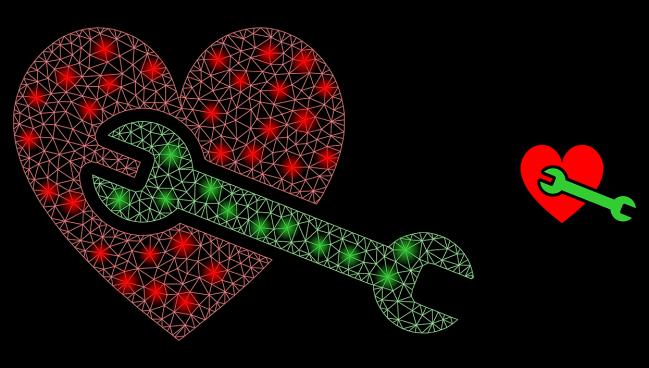Mechanism’s Mojo: ‘Obvious’ CV Therapies More Likely to Be Seen as Effective
The reverse paradigm also holds: proven therapies with RCT data are less likely to be thought effective if the mechanism is unclear.

If a therapy’s mechanism makes sense to cardiologists, they’re much more likely to believe that it works.
That’s the conclusion of a new survey conducted by Michael J. Foley, MBBS, and Rasha Al-Lamee, MBBS, PhD (both from Imperial College London, England), published this week in Circulation: Cardiovascular Quality and Outcomes.
The relationship between intuition and efficacy was highly correlated across numerous ftherapies, from a coronary sinus reducer (CSR) device to treat angina all the way to PCI for the treatment of STEMI. Moreover, if physicians intuitively understand how a device works mechanistically, and that extends to their belief in its effectiveness, that goes a long way to how much that device will be used in clinical practice, say investigators.
“I think it's important that we recognize that as we're appraising therapies, we may be giving an easier ride to therapies that are intuitive and we may be overly critical of those that are more abstract,” Foley told TCTMD. “I think we should be aware of our existing beliefs and how those beliefs might be influenced by how mechanistically intuitive some of those different therapies are.”
Al-Lamee, who led the sham-controlled ORBITA and ORBITA-2 trials rigorously testing PCI for the treatment of stable angina, said it’s important for physicians to analyze the data and to leave their preconceptions behind. “As hard as it might be, we shouldn’t allow our internal ideas, either our preconceived ideas about whether something works or preconceived ideas about the mechanism, to bias how we look at the results,” she told TCTMD. “We need to look at the results in isolation and then kind of work back from that point.”
We may be giving an easier ride to therapies that are intuitive, and we may be overly critical of those that are more abstract. Rasha Al-Lamee
Al-Lamee said this is particularly important around therapies designed to improve patient symptoms, a more subjective endpoint that can be influenced by a placebo effect. Just last week, for example, a US Food and Drug Administration advisory panel gave a favorable interpretation of the data used to support approval of transcatheter-edge-to-edge repair for tricuspid regurgitation on the basis of improved quality of life alone.
“What we’re really trying to do is go beyond just thinking about how we design clinical trials, but also thinking about how our own internal biases might influence how we interpret the results,” said Al-Lamee.
Makes Sense, Believe It Should Work
The online survey was completed by 59 cardiologists at six centers in the United Kingdom, with doctors asked to assess 25 different procedures in cardiology. These included, among others, laser myocardial revascularization for angina, renal denervation for hypertension, atrial fibrillation ablation, embolic protection for stroke prevention in TAVI, transcatheter edge-to-edge repair for mitral regurgitation, patent foramen ovale (PFO) closure for stroke, and surgical aortic valve replacement.
Some of these procedures had been tested in at least one randomized, controlled trial and had positive data supporting the intervention while others did not.
With each therapy, doctors were asked to grade the “obviousness” of the mechanism of action on a scale of 1 to 5, with higher scores reflecting a more intuitive mechanism. They also gave their opinion on how effective that therapy was using a similar scale. These scores—intuitive mechanism and subjective efficacy—were highly correlated (R = 0.945).
“When you look around at the procedures that we do, I think there's an obvious discrepancy between the level of sort of evidence available for those interventions and the amount that they're actually clinically utilized,” said Foley. “There’s lot of things we do where you might assume because they're so routine, and because we believe in them so strongly, that they've been subjected to randomized trials.”
Surgical aortic valve replacement, for one, has never been tested in a randomized, controlled trial yet it is an uncontroversial procedure performed routinely around the world. The same can be said for using a permanent pacemaker in patients with complete heart block. Use of a CSR device, on the other hand, has been shown to reduce angina episodes in a randomized, controlled trial but is relatively underutilized, as “it doesn’t fit into a preexisting paradigm for how the disease works,” said Foley.
PCI is such an intuitive therapy, such a plausible therapy, that we've actually given it so many bites at the cherry. Michael J. Foley
With pharmacotherapy, however, cardiologists expect to see randomized, placebo-controlled data supporting its use, with this area of medicine seemingly held to a higher standard than some devices or procedures.
“Of course, we all are taught in medical school and have an understanding of how those tablets work, but we don’t see them work in the same way that we see a procedure work,” said Al-Lamee. “When a procedure seems to work when we use it in the cath lab, and we understand how it works, especially with something as visual as coronary angioplasty, it seems we don’t demand the quite the same level of evidence from clinical trials.”
Al-Lamee noted that if a procedure’s mechanism isn’t fully understood, or doesn’t totally make sense, such as with laser myocardial revascularization for angina or PFO closure for migraine, then the therapy is quickly discarded if randomized, controlled trials show it’s ineffective. Foley said that if PCI had been a more abstract concept, it might have been cast aside given some of the earlier trials, including COURAGE, showing that it didn’t reduce hard clinical endpoints.
“PCI is such an intuitive therapy, such a plausible therapy, that we've actually given it so many bites at the cherry,” said Foley. “Now we understand it as an antianginal therapy and that’s now been backed up by randomized data in ORBITA-2. Even that understanding is ultimately driven from an updated mechanistic understanding of how angina and stable coronary disease works and how it arises in stable coronary artery disease.”
Foley noted that embolic protection during TAVI is another therapy where physicians clearly understand its mechanism of action. While meant to theoretically reduce the risk of stroke, the PROTECTED-TAVR failed to demonstrate a benefit with use of these devices compared with usual care. Of note, despite those results, investigators presenting the trial at TCT 2022 nevertheless concluded that embolic protection should be used for all patients undergoing TAVI for severe aortic stenosis.
Michael O’Riordan is the Managing Editor for TCTMD. He completed his undergraduate degrees at Queen’s University in Kingston, ON, and…
Read Full BioSources
Foley MJ, Rajkumar CA, Ahmed-Jushuf F, et al. Why does a cardiologist believe in a therapy? The role of intuitiveness and understanding the mechanism? Circ Cardiovasc Qual Outcomes. 2024;17:e010664.
Disclosures
- Foley and Al-Lamee report speakers’ honoraria from Philips Volcano and Menarini Pharmaceuticals.





Comments